All across the park system, scientists, rangers, and interpreters are engaged in the important work of studying, protecting, and sharing our rich fossil heritage. Park Paleontology news provides a close up look at the important work of caring for these irreplaceable resources.
- Contribute to Park Paleontology News by contacting the newsletter editor
- Learn more about Fossils & Paleontology
- Celebrate National Fossil Day with events across the nation
-
Colonial National Historical Park
Article 1: Counting Fossils in Colonial Virginia During COVID-19
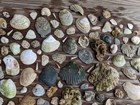
The first paleontological inventory of Colonial National Historical Park, Virginia, began in 2020. This historically notable area also hosts exposures of fossil-bearing rocks, and the fossils here have been collected since at least the 17th century. The execution of this project has had to face additional challenges imposed by the emergence of COVID-19. Read more
-
Article 2: Prehistoric Road Trip Helps Expose Deep Histories of some National Parks in New PBS Series
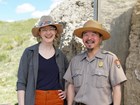
The PBS series Prehistoric Road Trip features visits to several National Park Service units of the Great Plains. Among them are: Badlands National Park, featuring the story of a fossil skull discovered by a young visitor; Agate Fossil Beds National Monument, home of fossils including ancient beaver burrows known as "Daemonelix", the “Devil’s Corkscrew”; and the former Fossil Cycad National Monument, abolished after the surface was stripped of the namesake plant fossils. Read more
-
Mammoth Cave National Park
Article 3: The Ghosts of Ancient Sharks at Mammoth Cave National Park
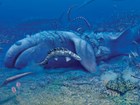
2019–2020 investigations at Mammoth Cave National Park, Kentucky, have revealed an unprecedented assemblage of Paleozoic (Late Mississippian) shark fossils preserved in the passages of the cave system. Not only teeth and spines are present, but there are examples of rare cartilaginous skeletal remains, and the fossils include previously unknown species. Read more
-
Tule Springs Fossil Beds National Monument
Article 4: A Monumental Task: A Vision for the Future of Tule Springs Fossil Beds National Monument
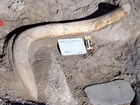
Derek Carter is the new Superintendent of Tule Springs Fossil Beds National Monument, a rich Pleistocene fossil site northwest of Las Vegas, Nevada. Management of this site, which is both recently established and adjacent to a growing metro area, has numerous challenges and opportunities. Superintendent Carter looks to address visitor experience, scientific research, and resource management. Read more
-
Channel Islands National Park
Article 5: Paleontology of Channel Islands National Park

Channel Islands National Park has one of the best fossil records in the National Park Service. The marine rocks of the islands have yielded significant microfossils, shellfish and other invertebrates, and marine vertebrates such as sea cows. Younger sedimentary deposits blanketing the islands include fossils of birds, other small vertebrates, snails, plant roots, and the famous pygmy mammoths. Read more
-
John Day Fossil Beds National Monument
Article 6: Jennifer Cavin, Fossil Preparator at John Day Fossil Beds National Monument
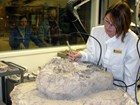
Jennifer Cavin has been the fossil preparator at John Day Fossil Beds National Monument, Oregon, since 2008. Her work involves exposing collected fossils from the surrounding rock, repairing damage to specimens, and other tasks that are intended to preserve and protect fossils for future study and display. Read more
-
Death Valley National Park
Article 7: Ancient Springs Reveal a Pleistocene Vertebrate Fauna and a 100,000 Year Record of Paleoclimate in Death Valley National Park
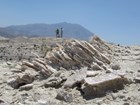
Recent investigation of the Rogers beds of Death Valley National Park, California, have uncovered abundant bones of late Pleistocene animals. Study of the beds themselves show that they are ancient spring-fed wetlands deposits, like those seen elsewhere in the Southwest, and tie into the Mojave Desert record of regional climate cycles. Read more
